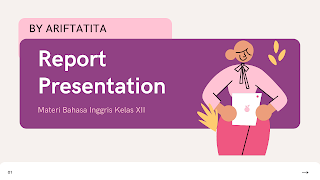LESSON PLAN
School : SD N
Potrobangsan 3 Magelang
Subject : English
Grade/Semester : II/2
Topic : Plant
and Animal (Environment)
Time Allocation : 2 x 35 minutes
Day/date : March 8th,
2013
Academic year : 2012/2013
A. Standard Competence
1.
Listening
Comprehending
the simple instructions in the class context.
2.
Speaking
Expressing
the instruction and information that very simple in the class context.
3.
Reading
Comprehending
English written that very simple in the class context.
4.
Writing
Spelling and
copying English written that very simple in the class context.
B. Basic Competence
1.
Comprehending very
simple text acceptably with pictures.
2.
Having conversation to
says words, phrases, or simple sentences
which are need for communication.
3.
Reading and
comprehending a very simple text with picture that relevant with the topic.
4.
Spelling simple
words correctly and acceptably.
5.
Writing vocabulary that
relevant with the topic.
C. Indicators
1.
To respond the
teacher’s word physically and verbally.
2.
To identify the name of
animal and plant.
3.
To point the picture of
plant and animal which have been mentioned by the teacher.
4.
To read and repeat with
pay attention about in the correct pronunciation and intonation and answer the
question.
5.
To answer the teacher’s question .
6.
To match the picture of
plant and animal with words or right sentences.
7.
To copy words or short
phrase about plant and animal which have
been giving.
D.
Learning Objectives
At the end of the lesson :
The students are able to identify the
meaning of the word from context.
1.
The students are able
to mention about the name of animal on the farm and animal on the zoo.
2.
The students are able
to mention about the name of vegetables and fruits.
3.
The students are able
to point the pictures which have
been mentioned by the teacher.
4.
The students are able
to read text with pay attention of
pronunciation and intonation.
5.
The students are able
to complete sentence and arrange into the correct sentence.
6.
Students are able to
answer simple questions.
7.
Students are able to
match the picture of animal and plant to the words or sentence correctly.
8.
Write the names of
plant and animal in English correctly.
E.
Learning Material
-
Pictures Plant and animal
-
Vocabulary Chart
-
Text
-
F. Learning method: three-phrase
technique
G. Steps of the activities
Teaching
– learning activities
|
Time
allocation
|
OPENING
Teacher greets the
students:
Ø Good
morning students
Ø How
are you today?
Introducing as the
new teacher.
Registration:
Teacher : Who is
absent today?
I will call you one by one.
|
5’
|
MAIN ACTIVITY
a.
EXPLORATION
The teacher
1.
Asks the students to
mention the name of Animal.
2.
Check the previous
knowledge
Teacher :
“What do you know about plant and animal?”
Teacher : The Kinds of
Animals are Cow, Duck, Buffalo, Goat, Rabbit,
Elephant, Tiger, Lion, etc.
Zoo animals are Elephant, Tiger,
Camel, Monkey.
Farm animals are cow, Buffalo, Goat,
Rabbit, etc.
Animal
Buffalo, Goat,
Rabbit, Elephant, Tiger, Lion,etc
|
3.
Give a note about ‘animals
and ask them to write in their
notebook.
4.
Ask students to read
and repeat animal vocabulary after the teacher says.
5.
Give the game to help
the students to remember the lesson easily.
For example :
Jumble words
b – i – t – r – b – a
=
________________________________
b.
ELABORATION
The
teacher
1.
Teacher gives example
how to read the reading text, and the students imitate it.
c.
CONFIRMATION
1.
The teacher
Gives a written test Animals (multiple choice and
fill n the blanks).
CLOSING
1.
The teacher
Summarizes and review about the main points of the
topic together.
2.
Encourages the
students to always learn English.
3.
Gives Homework.
4.
Closes with ask to
pray together and says goodbye
|
20’
25’
10’
10’
|
H. Learning resources and media
1.
Oxford advanced
learner’s dictionary
2.
Relevant pictures
3.
Students’ Worksheet
I. Assessments of Learning
Indicator of Scoring
|
Scoring Technique
|
Score
|
Students choose the
right answers on the worksheet.
|
Written test
a. 1 number
have score 1 for ABC, if all questions are answered correct have score
b.1
number have score 2 for essay, if all questions are answered correct have
score
Score maximum
|
10
1x5=5
2 x10
100
|
Magelang,
March 8th 2013
Approved
by,
English Teacher Teacher
trainer
Fx. Hari
Raharjo Nur Arifta Lantiningrum
Approved by,
Lecturer
M.
Malik Firdaus, M. Pd.
Written Test of ‘Animal and Plant’
Name
: ______________
Class
: ______________
No
: ______________
B.
Choose the correct answer by crossing (x) a, b, or c!
Pilihlah jawaban yang benar dengan
menyilang (x) huruf a, b, atau c!
1.
... is an amphibian.
a.
Frog
b.
Turtle
c.
Goose
2.
It is ....I
can see it in the zoo.
a.
Elephant
b.
Tiger
c.
Cow
3.
Joni has a ....
a.
Goose
b.
Horse
c.
sheep
4.
Orin has cute ...
a.
Rabbit
b.
Snake
c.
cat
5.
Look, the ... very dangerous!
a.
Cat
b.
Tiger
c.
Snake





